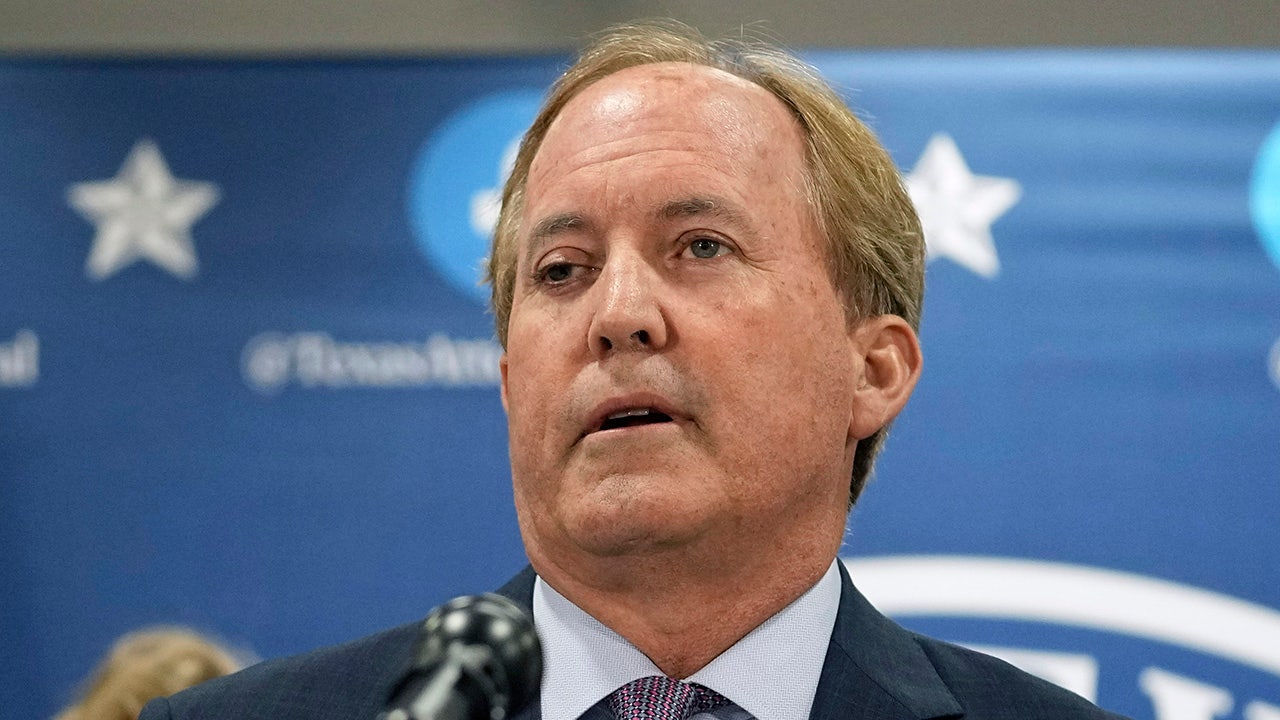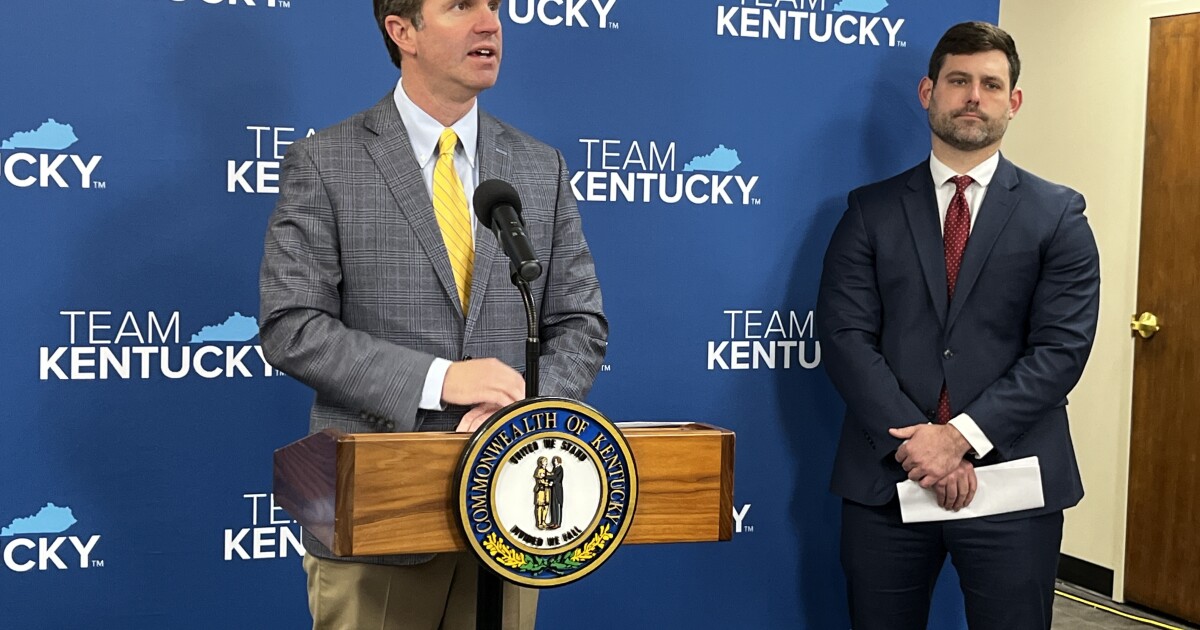Texas
A Texas politician wants to provide emergency services to constituents who don’t have them. Will they let him?
/static.texastribune.org/media/files/4625f8bcc981a1a94f695d0e12f75b48/1106%20West%20Odessa%20TT%20EH%2006.jpg)
Sign up for The Brief, The Texas Tribune’s daily newsletter that keeps readers up to speed on the most essential Texas news.
WEST ODESSA — Two brick houses stand beside each other on a remote street off the main highway. A statue of Jude the Apostle, the patron saint of hope and lost causes, stands guard in front of the compound.
The houses are not mansions, but Jesús Sierra is proud of them all the same. After all, he built them himself, layering each brick. In just two years, he turned a blighted lot in the middle of nowhere into a home.
The freedom to build a life with no questions asked is a rarity found in West Odessa, an unincorporated area here in Ector County. There is no city council, no municipality with zoning laws. Only state and federal laws apply.
It’s what attracted Sierra.
“Here, I can build what I want,” Sierra said. “And I don’t owe anybody a thing.”
“And it’s tranquil,” his wife, Ernestina, said as she gazed at the parcel of land where the family of seven lives their idyllic life.
/https://static.texastribune.org/media/files/2bbc6bd15da9cd725818e1864fd7d34d/1106%20West%20Odessa%20TT%20EH%2007.jpg)
Jesús Sierra’s grandchildren Xavier and Malyna play in their family’s yard. A small PVC pipe seen nearby provides water to their parent’s home.
Credit:
Eli Hartman/The Texas Tribune
/https://static.texastribune.org/media/files/bc438818f795cfc499b57782f6d4d3fc/1110%20West%20Odessa%20TT%20EH%2001.jpg)
An oil rig storage yard is seen beyond the Knox Village neighborhood in West Odessa.
Credit:
Eli Hartman/The Texas Tribune
While the taxes are low and the government barely exists, there is a cost to those who desire to live unbothered and under the radar.
In this libertarian Utopia, dogs and donkeys run free. Mansions are built next to junkyards. An infinite number of tires for cars and trucks litter the side of the road and are piled high on acres of deserted land. Oil wells pop out of nowhere. Businesses known as game rooms, which provide space for legally dubious sexual activity and other questionable undertakings, dot the map.
For thousands of residents in West Odessa, running water is a luxury with no widespread infrastructure to support it. Neighborhoods are connected by uneven dirt roads. Driving conditions are choppy at best and risky at worst. If there is a speed limit — no one behind the wheel of a large pickup is paying attention to it. Streetlights are few and far between.
The nearest hospital and police department are in the city, miles from reach.
Ector County Judge Dustin Fawcett — a newly elected millennial with Ronald Reagan’s movie star good looks and conservative values — hopes to slowly civilize the sprawling arid acres that make up West Odessa.
He hopes to foster an unlikely relationship between himself and the residents who moved there hoping to steer clear of bureaucrats and politicians. And in doing so, establish an emergency service district.
The plan — which will require voter approval — would bring ambulances and a fire rescue department to the residents’ backyards. The cost of introducing those services to West Odessa would be roughly $1 million annually through a new property tax, Fawcett said.
On a fundamental level, Fawcett is asking West Odessans to grapple with timeless American questions: How much government do you want in your life? And what are you willing to give up for the greater good?
Residents are either skeptical or outright opposed to Fawcett’s plan. Frustrated residents in a crowded room told him as much during a town hall this summer.
/https://static.texastribune.org/media/files/9bb2bec49873fb8a2b3d59ce4ac32a9f/0913%20Dustin%20Fawcett%20TT%20EH%2008.jpg)
Ector County Judge Dustin Fawcett poses for a portrait at the Ector County Commissioners Court in Odessa.
Credit:
Eli Hartman/The Texas Tribune
/https://static.texastribune.org/media/files/69990a1b9390acb7fd5ae600f7710c59/0913%20Dustin%20Fawcett%20TT%20EH%2002.jpg)
Members of the Permian Basin Regional Planning Commission, including Ector County Judge Dustin Fawcett, meet on Sept. 13, 2023 in Midland. The commission deals in issues specific to its 17 member counties and their highest ranking officials, such as supporting emergency operations and economic development in the region.
Credit:
Eli Hartman/The Texas Tribune
“You’re a liar, Dustin!” one resident yelled, saying the county had already fallen short of helping West Odessans.
Fawcett said the meeting served its purpose and piqued the interest of residents.
It will take more than one town hall to persuade them to vote in favor of the services, he said.
Months later, residents are still unsure what to make of Fawcett’s pitch. Many shrugged it off, an early indication of apathy the county judge — the highest ranking elected official in Ector County — will have to overcome in order to drive people to the polls.
“It’s a hell of a challenge, but this is a majority of the reason I ran,” Fawcett said. “Because if something isn’t done soon, then the future is very bleak for the region.”
Unincorporated regions can be the most Texas part of Texas — freewheeling and wild, it’s each rugged individual for themselves.
In Texas, there are 538 unincorporated areas, according to the census. The total number of inhabitants in unincorporated areas of the state is over half a million, a fraction of the state’s 30 million. Some areas have as few as nine residents. The most populous is The Woodlands, north of Houston, with more than 110,000.
Official census figures report an estimated 32,000 people live in West Odessa. Fawcett believes the population is much higher at 50,000, nearly half the size of the city of Odessa.

Dagoberto Fierro loads groceries into the bed of his truck with help from Karime Quintana after a trip to Lowe’s, one of West Odessa’s only grocery stores.
Credit:
Eli Hartman/The Texas Tribune
/https://static.texastribune.org/media/files/96698b5f186da3bbe5601f32483e0fc6/0914%20West%20Odessa%20TT%20EH%2003.jpg)
Ruben Pando, left, and his son Armando Pando, second from right, sit down for a meal at El Taco Loco Brirrieria as the sun begins to set in West Odessa.
Credit:
Eli Hartman/The Texas Tribune
As oil production reaches record levels in the Permian Basin, the petroleum-rich region of West Texas that includes Ector and Midland counties, workers flock to the region in droves, settling in trailer parks and man camps that offer a bare minimum livelihood.
Ector County provides what services it can afford to West Odessa through the sheriff’s department, ambulances, and road crews, but it’s stretched thin. The money the county receives through current taxes is not enough to massage the growing pains.
Emergency calls can take up to an hour. The only service in the 62 square miles is a volunteer fire department, a group of seven that has responded to over 600 emergencies this year alone.
Such was the case for Jesús Rodríguez, who lives with his wife, Anita, in one of West Odessa’s many backstreets. One night, the couple recounted, Rodríguez, 67, suffered a stroke, and Anita called 911. But the ambulance wouldn’t reach their home for almost a half hour, they said.
So they waited.
“It was scary,” Anita said.
Rodriguez is recovering and keeps himself busy in a makeshift junkyard with odds and ends he’s accumulated over the years. And the best part, Rodríguez said, is that he gets to have a chicken coop, which is illegal in Odessa due to a local ordinance preventing residents from owning livestock, fowl, or hogs.
The couple said they dislike getting involved in politics but agreed that the area needs the support. Rodríguez said the volunteer fire department needs help. He would vote for the emergency district if it would help the fire department.
/https://static.texastribune.org/media/files/a26f70f4e32bfa96ba20c6ea08499e3c/1110%20West%20Odessa%20TT%20EH%2002.jpg)
Motorists avoid potholes while driving down a caliche road in Knox Village, a mixed neighborhood of permanent homes, residential trailers and recreational vehicles in West Odessa.
Credit:
Eli Hartman/The Texas Tribune
/https://static.texastribune.org/media/files/ecadd11f1348036492a21e2545efae92/1106%20West%20Odessa%20TT%20EH%2005.jpg)
A guard dog is seen chained to a slack line outside of Jesús Sierra’s home. The family has lived in West Odessa for 13 years after spending time in various parts across Texas and New Mexico.
Credit:
Eli Hartman/The Texas Tribune
If approved, the emergency service district would add to the recently established water district. The county created the board that oversees and administers the utility to West Odessa, but its reach is limited. The board serves properties by relying on existing water infrastructure, which does not run through every home. And the utility’s million-dollar budget has not been enough to feed every property.
Residents improvise.
Last year, Maria Miranda moved to West Odessa with her three children after her husband, Adrian, got a job working in the oil fields. After 17 years in the Chicago suburbs, West Odessa seemed like an alien planet.
She fits a family of six into a cramped RV, using every nook and cranny as either storage or a pantry. It’s affordable, she said, and the family gets by with little. It’s organized chaos. Every shelf in the trailer is reserved for the children’s most frequently worn clothing. The kitten’s litter and bed are in a small restroom. Outside, she keeps the items that don’t fit in the trailer’s interior in storage bins by category.
Behind the trailer, she keeps a row of bins for the laundry next to the washing machine, as well as a clothesline for drying.
The washing machines are connected to a communal water system beneath the ground. It provides water to a row of 15 trailers in that park. It’s a hassle with so many loads, but it beats paying $70 at the laundromat each trip, she said.
Miranda said she didn’t know much about the county’s efforts to introduce more services. She barely has time to think about it, with everything she keeps up with. Still, she said, more services would be nice.
“It surprised me that a lot of people lived like this,” Miranda said.
/https://static.texastribune.org/media/files/c80ed9d12f8fa412212f164ceb1f9a0b/0914%20West%20Odessa%20TT%20EH%2004.jpg)
Alexa Miranda hugs her mother, Maria, as she cleans dishes in their travel trailer. Maria, a native of Chicago, moved her family to West Odessa after her husband got a job as a driver in the oil fields.
Credit:
Eli Hartman/The Texas Tribune

Samantha and Alexa Miranda stand in the doorway of their family’s trailer. The siblings live in the trailer with the four other members of their family, sharing a communal water supply with the other taps in the RV park.
Credit:
Eli Hartman/The Texas Tribune
The couple applied for a house in Odessa proper, but their application had been denied because neither had strong enough credit, she said. But the RV is a temporary arrangement while they figure out what’s next.
Until then, the family likes to drive around, searching for vacant lots — not just any plot of land, she said, but the one they’ll own. One day, they’ll have enough savings to settle down in their corner of West Odessa. They’ll live in one of those big trailers she’s seen in the neighborhood, she said, and the kids will love all that freedom.

Texas
Collin, Tarrant and Denton cities bring North Texas to over 8.3 million inhabitants

North Texas remains the most populated region in the state with more than 8.3 million residents, due in part to staggering growth in Collin County, which added more than 145,000 residents in the last four years, as well as continued growth in Fort Worth, which appears to have surpassed Austin as the fourth most populous city in the state.
From 2020 to January 2024, North Texas has gained over 560,000 residents, according to new population estimates by the Texas Demographic Center (TDC). The population explosion is most notable in Collin, Tarrant, Denton, Rockwall, and Kaufman counties. According to the data, these counties lead the state in either numeric gains or percentage increases over the last four years.
Collin County added almost 145,000 residents in the last four years, the most significant increment in the state. The county now has 1.2 million residents, most of them in the cities of McKinney (about 220,000 people), Frisco (220,000 people) and Allen (110,000 people), as of January 2024. Denton County also saw considerable growth and gained more than 100,000 residents over the last four years, surpassing a million inhabitants.
Celina, a city in the counties of Denton and Collin, had over 43,000 residents, according to the January 2024 estimates. This city more than doubled its population from nearly 17,000 people in the 2020 Census.
“Well, I think a lot of that has to do with where we’re located,” elaborated Joe Monaco, Director of Marketing & Communications of Celina City.
“We have Preston on one side; we’ve got the Tollway expanding on the other side. We are 40 miles away from Dallas, and we’re really benefiting a lot from all the businesses that are coming into Dallas and especially the North Texas area.”
Originally from Ohio, Monaco said he lived in Mansfield and Frisco before settling in Prosper with his family during the pandemic.
“What attracted us is that we wanted to be in an area where our kids had great schools like all parents do,’ he said, “and we wanted to be in the area we felt very safe.”
Collin’s growth in the last years has been so rapid that it has already met one of the two scenarios of what this county’s population would be in 2030. The demographic center, in 2012, projected Collin to have 1.2 million people at the end of the decade in a scenario with half of the 2010-2020 migration rates. The second projection (assuming the 2010-2020 migration rates) estimates Collin to reach 1.3 million by the end of 2030, 1.6 million people by 2040, and 2.4 million by 2060.
Other examples of North Texas’ expansion are Kaufman and Rockwall, two neighboring Dallas counties, which experienced the highest percentage growth in population in the state. Kaufman’s population grew by 26.7%, or about 39,000 residents, from 2020 to 2024. Rockwall increased its population by 25% in the same period, growing the county by about 28,000 residents.
Tarrant, in turn, has gained more than 93,000 residents from 2020 to 2024, a 4.4% increase. Its total estimated population is 2.2 million, from 2.1 million last year. Fort Worth alone took in more than 70,000 new residents from 2020 to 2024, and its current population stands at almost 990,000 inhabitants. The newest figures by TDC suggest Fort Worth might have just surpassed Austin in population. The capital of Texas has about 987,000 inhabitants, according to the January 2024 estimates.
“Growth has been explosive,” said Jaime Resendiz, real estate agent and host of The DFW Homeowner, a YouTube channel exploring the housing market in the area. “There’s growth on the south side of the Dallas-Fort Worth metroplex, but the North just blows it out of the water.”
“Anything that is North is just going to have high demand, and typically there, with the real estate prices, you’re seeing the appreciation in these areas just go through the roof,” Resendiz explained.
The Texas Demographic Center releases yearly population estimates that differ from those of the U.S. Census Bureau and use a different methodology. It projects population with a mix of national and local data, as well as state surveys on building permits and school enrollment.
“County-level birth and death data were obtained from the Texas Department of State Health Services,” the methodology report reads.
In the last four years, 90 Texas counties have decreased their population, but none of them are in the North Texas area. Dallas County is among the counties with some of the lowest increments from 2020 to 2024, since it gained only 0.6% in this period. This translates to over 16,000 new residents, and the population remains at 2.6 million, with minimal change over the last four years. The metro area of Dallas-Fort Worth-Arlington now has over 8.1 million residents after crossing the 8 million mark last year.
Texas
Here’s Clemson football, Dabo Swinney’s depth chart for first-round CFP game vs Texas

CLEMSON — Clemson football released its depth chart Monday ahead of its first-round CFP game vs. Texas.
The most notable changes involve the removal of key players who are injured or entered the transfer portal. Backup running back Jay Haynes was removed after suffering a leg injury in the ACC championship against SMU on Dec. 7. Running backs Keith Adams Jr., Jarvis Green and David Eziomume are listed as the No. 2 running back behind Phil Mafah.
Wide receiver Adam Randall also replaced Haynes as the starting kick returner. Clemson’s depth chart removed nickelback Sherrod Covil Jr. and wide receiver Noble Johnson too. Both were backups who entered the transfer portal.
The No. 12 seed Tigers (10-3) will face the No. 5 seed Longhorns (11-2) on Dec. 21 (4 p.m. ET, TNT) in Austin, Texas, at Darrell K Royal Texas Memorial Stadium. The winner advances to play No. 4 seed Arizona State, the Big 12 champion, in the Peach Bowl at Mercedes-Benz Stadium in Atlanta on Jan. 1 (1 p.m. ET, ESPN).
Here’s Clemson’s full depth chart before it faces Texas on Saturday:
Clemson football’s offense
QB: Cade Klubnik | Christopher Vizzina
RB: Phil Mafah | Keith Adams Jr. or Jarvis Green or David Eziomume
WR: Antonio Williams | Tyler Brown | Misun Kelley
WR: T.J. Moore | Cole Turner
WR: Bryant Wesco Jr. or Adam Randall | Cole Turner | Hampton Earle
TE: Jake Briningstool | Olsen Patt-Henry | Josh Sapp | Markus Dixon
LT: Tristan Leigh | Mason Wade
LG: Marcus Tate | Harris Sewell
C: Ryan Linthicum | Harris Sewell
RG: Walker Parks | Harris Sewell
RT: Blake Miller | Mason Wade
Clemson football’s defense
DE: Jahiem Lawson | A.J. Hoffler
DT: Payton Page | DeMonte Capehart | Vic Burley
DT: Peter Woods | Tré Williams | Stephiylan Green
DE: T.J. Parker | Cade Denhoff
SLB: Wade Woodaz | Jamal Anderson
MLB: Wade Woodaz | Sammy Brown or Dee Crayton
WLB: Barrett Carter | Sammy Brown or Dee Crayton
CB: Avieon Terrell | Ashton Hampton | Corian Gipson
SS: Kylon Griffin or Tyler Venables | Ricardo Jones
FS: R.J. Mickens | Tyler Venables | Rob Billings
NB: Khalil Barnes | Shelton Lewis
CB: Jeadyn Lukus or Ashton Hampton | Branden Strozier
Clemson football’s special teams
PK: Nolan Hauser | Robert Gunn III
P: Aidan Swanson | Jack Smith
KO: Robert Gunn III
LS (PK): Holden Caspersen
LS (P): Philip Florenzo
H: Clay Swinney
KR: Adam Randall
PR: Antonio Williams
Derrian Carter covers Clemson athletics for The Greenville News and the USA TODAY Network. Email him at dcarter@gannett.com and follow him on X, formerly known as Twitter, @DerrianCarter00
Texas
Texas AG sues New York doctor who allegedly prescribed abortion pills to woman in Lone Star State

Texas Attorney General Ken Paxton, a Republican, has filed a lawsuit against a New York doctor who allegedly prescribed abortion drugs to a woman in the Lone Star State, violating Texas law.
Paxton accused Dr. Margaret Carpenter of mailing pills from New York to a 20-year-old woman in Collin County, Texas, where the woman allegedly took the medication when she was nine weeks pregnant, according to the lawsuit.
When she began experiencing severe bleeding, she asked the baby’s father, who had been unaware she was pregnant, to take her to the hospital.
The filing does not state if the woman successfully terminated her pregnancy or if she experienced any long-term medical complications from taking mifepristone and misoprostol.
PRO-LIFE GROUPS SOUND OFF AFTER TRUMP SAYS HE WILL NOT RESTRICT ABORTION PILLS: ‘SERIOUS AND GROWING THREAT’
Texas Attorney General Ken Paxton has filed a lawsuit accusing a New York doctor of prescribing abortion drugs to a Texas woman, violating laws in the Lone Star State. (AP Photo/Eric Gay, File)
Paxton’s lawsuit is the first attempt to test legal protections when it comes to states with conflicting abortion laws since the U.S. Supreme Court overturned Roe v. Wade in 2022, ending federal protection on the matter.
Texas has enacted an abortion ban with few exceptions, while New York protects access to the procedure and has a shield law that protects providers from out-of-state investigations and prosecutions, which has been viewed as implicit permission for doctors to mail abortion pills into states with restrictions.
Texas has promised to pursue cases like this regardless of the shield laws, though it is unclear what the courts may decide on this issue, which involves extraterritoriality, interstate commerce and other legal questions. New York’s law allows Carpenter to refuse to comply with Texas’ court orders.
ABORTIONS SLIGHTLY DECLINED THE YEAR ROE V. WADE WAS OVERTURNED, CDC SAYS
It is also unknown whether New York courts would side with protecting Texas’ law, which prohibits prescribing abortion-inducing drugs by mail and prohibits treating Texas patients or prescribing medication through telehealth services without a valid Texas medical license.

The woman allegedly took mifepristone and misoprostol when she was nine weeks pregnant. (AP Photo/Charlie Neibergall)
Texas’ abortion laws prohibit prosecuting a woman for getting an abortion, but do allow for physicians or others who assist a woman in receiving the procedure to be prosecuted.
The lawsuit says Carpenter, the founder of the Abortion Coalition for Telemedicine, knowingly treated Texas residents despite not being a licensed Texas physician and not being authorized to practice telemedicine in the state. Paxton urged a Collin County court to prohibit Carpenter from violating Texas law and impose civil penalties of at least $100,000 for each violation.

Texas law states that physicians cannot prescribe abortion medication by mail and forbids physicians without a Texas license from providing telehealth services or prescribing medication to patients in the Lone Star State. (AP Photo/Charlie Riedel, File)
CLICK HERE TO GET THE FOX NEWS APP
“In this case, an out-of-state doctor violated the law and caused serious harm to this patient,” Paxton said in a statement. “This doctor prescribed abortion-inducing drugs — unauthorized, over telemedicine — causing her patient to end up in the hospital with serious complications. In Texas, we treasure the health and lives of mothers and babies, and this is why out-of-state doctors may not illegally and dangerously prescribe abortion-inducing drugs to Texas residents.”
Carpenter also works with AidAccess, an international abortion medication provider, and helped found Hey Jane, a telehealth abortion provider.
-

 Technology1 week ago
Technology1 week agoStruggling to hear TV dialogue? Try these simple fixes
-

 Business1 week ago
Business1 week agoOpenAI's controversial Sora is finally launching today. Will it truly disrupt Hollywood?
-

 Politics3 days ago
Politics3 days agoCanadian premier threatens to cut off energy imports to US if Trump imposes tariff on country
-
/cdn.vox-cdn.com/uploads/chorus_asset/file/25782636/247422_ChatGPT_anniversary_CVirginia.jpg)
/cdn.vox-cdn.com/uploads/chorus_asset/file/25782636/247422_ChatGPT_anniversary_CVirginia.jpg) Technology5 days ago
Technology5 days agoInside the launch — and future — of ChatGPT
-
/cdn.vox-cdn.com/uploads/chorus_asset/file/25789444/1258459915.jpg)
/cdn.vox-cdn.com/uploads/chorus_asset/file/25789444/1258459915.jpg) Technology3 days ago
Technology3 days agoOpenAI cofounder Ilya Sutskever says the way AI is built is about to change
-

 Politics3 days ago
Politics3 days agoU.S. Supreme Court will decide if oil industry may sue to block California's zero-emissions goal
-
/cdn.vox-cdn.com/uploads/chorus_asset/file/25546252/STK169_Mark_Zuckerburg_CVIRGINIA_D.jpg)
/cdn.vox-cdn.com/uploads/chorus_asset/file/25546252/STK169_Mark_Zuckerburg_CVIRGINIA_D.jpg) Technology3 days ago
Technology3 days agoMeta asks the US government to block OpenAI’s switch to a for-profit
-

 Politics4 days ago
Politics4 days agoConservative group debuts major ad buy in key senators' states as 'soft appeal' for Hegseth, Gabbard, Patel


















